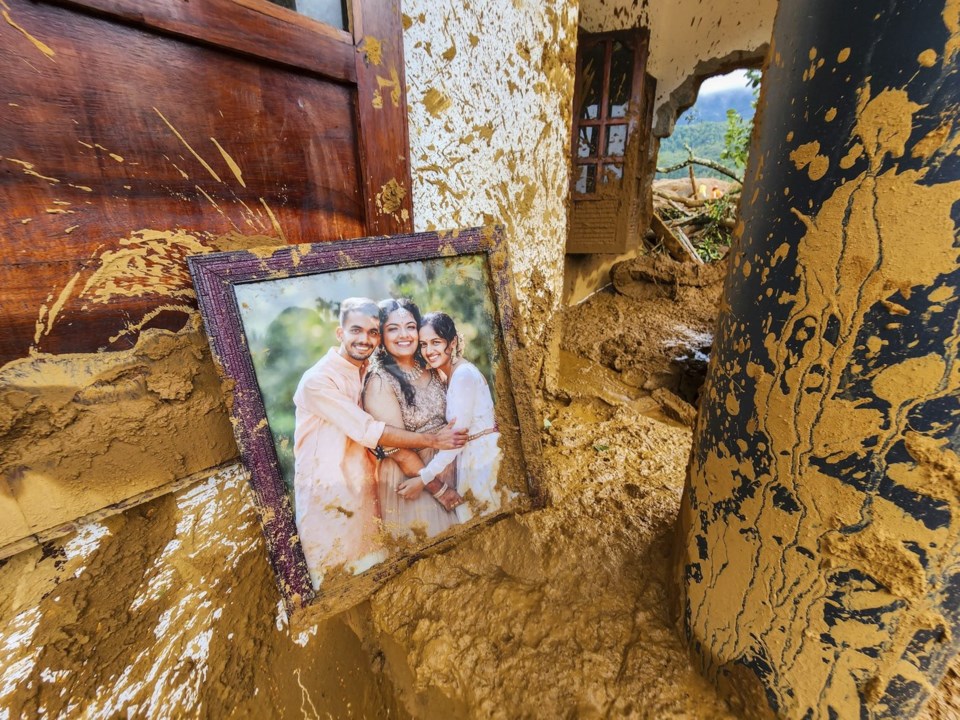NEW DELHI (AP) — Multiple landslides in southern India have killed 93 people and many others are feared trapped under the debris, officials said Tuesday, after torrential rains triggered torrents of mud and water that swept through tea estates and villages.
The landslides hit hilly areas in Kerala state’s Wayanad district early Tuesday, flattening houses, uprooting trees and destroying bridges. Rescuers were working to pull out people stuck under mud and debris, but their efforts were hampered by blocked roads and unstable terrain. Authorities have yet to determine the full scope of the disaster.
Kerala's chief minister, Pinarayi Vijayan, said the landslides had killed at least 93 people and more than 100 people were receiving treatment for injures. He said more than 3,000 people have been moved to relief camps.
Vijayan did not specify how many people were missing or trapped under the debris.
Local media reported that most of the victims were tea estate workers. Television footage showed rescue workers making their way through mud and uprooted trees to reach those who had been stranded. Vehicles swept off the roads were seen stuck in a swollen river. Local TV news channels also aired phone calls of stranded people asking for help.
Authorities mobilized helicopters to help with rescue efforts and the Indian army was roped in to build a temporary bridge.
“We are trying every way to rescue our people,” state Health Minister Veena George said.
In a post on social media platform X, Indian Prime Minister Narendra Modi said he was “distressed by the landslides in parts of Wayanad," a hilly district which is part of the Western Ghats mountain range.
“My thoughts are with all those who have lost their loved ones and prayers with those injured,” Modi wrote. He announced compensation of 200,000 rupees ($2,388) to the victims’ families.
India’s weather department has put Kerala on alert as the state has been lashed by incessant rains. Downpours have disrupted life for many, and authorities closed schools in some parts Tuesday. More rains are predicted through the day.
Kerala, one of India’s most popular tourist destinations, is prone to heavy rains, flooding and landslides. Nearly 500 people were killed in the state in 2018 in one of the worst floods.
The Indian Meteorological Department said the state has had heavy rainfall over its northern and central regions, with Wayanad district recording up to 28 centimeters (11 inches) of rain in the past 24 hours.
“Monsoon patterns are increasingly erratic and the quantum of rainfall that we receive in a short spell of time has increased. As a result, we see frequent instances of landslides and floods along the Western Ghats,” said Roxy Mathew Koll, a climate scientist at the Pune-based Indian Institute of Tropical Meteorology.
Koll also said authorities must check on rapid construction activities happening over landslide areas.
“Often landslides and flash floods occur over regions where the impact of both climate change and direct human intervention in terms of land use changes are evident,” he said.
A 2013 report by a federal government-appointed committee said that 37% of the total area of the Western Ghats mountains should be declared an ecosensitive area and proposed restrictions on any form of construction. The report’s recommendations have not been implemented so far because state governments and residents opposed it.
India regularly has severe floods during the monsoon season, which runs between June and September and brings most of South Asia’s annual rainfall. The rains are crucial for rain-fed crops planted during the season, but often cause extensive damage.
Scientists say monsoons are becoming more erratic because of climate change and global warming.
___
AP writer Sibi Arasu in Bengaluru, India, contributed to this report.
Sheikh Saaliq, The Associated Press

